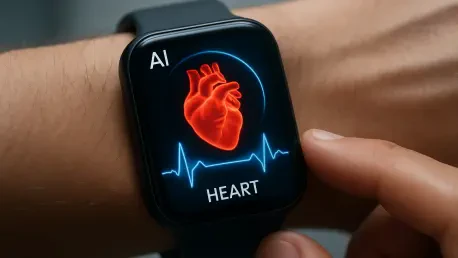I’m thrilled to sit down with Ivan Kairatov, a renowned biopharma expert with extensive experience in tech and innovation within the industry. With a strong background in research and development, Ivan has been at the forefront of integrating cutting-edge technologies into healthcare. Today, we’re diving into a groundbreaking study on the use of AI algorithms paired with smartwatch ECG sensors to detect structural heart diseases—a development that could transform early screening and preventive care. Our conversation will explore the challenges of diagnosing these conditions, the innovative approach behind this technology, the development and real-world testing of the AI model, and its potential to reshape how we approach heart health on a global scale.
Can you start by explaining what structural heart diseases are and why they often go undetected until serious complications arise?
Structural heart diseases are conditions that affect the heart’s physical structure, such as weakened pumping ability, damaged valves, or thickened heart muscle. These issues can severely impact how the heart functions, but they’re often silent in their early stages, showing no obvious symptoms. Unlike rhythm disorders like atrial fibrillation, which might cause noticeable palpitations, structural problems typically require advanced imaging like an echocardiogram to diagnose. The challenge is that such tests aren’t routinely available for screening large populations, so many cases are caught only after a major event like heart failure or a stroke. Early detection is critical, and that’s where innovative tools like AI can make a difference.
What inspired your team to explore using a smartwatch’s single-lead ECG sensor for detecting these hidden heart conditions?
The idea stemmed from the realization that millions of people already wear smartwatches daily, primarily for fitness tracking or detecting rhythm issues like atrial fibrillation. We saw an opportunity to leverage this widespread technology for something more complex—identifying structural heart diseases. Current screening methods often rely on specialized equipment that isn’t accessible to everyone, especially in remote or underserved areas. We wanted to bridge that gap by repurposing a device people already own into a potential lifesaver, focusing on early detection before these conditions progress to critical stages.
Can you walk us through the process of developing the AI algorithm for this purpose?
Developing the AI algorithm was a multi-step journey. We started with a massive dataset of over 266,000 12-lead ECG recordings from more than 110,000 adults, which gave us a robust foundation to train the model. The challenge was adapting this to a single-lead ECG, similar to what a smartwatch provides, by isolating just one lead from the 12-lead data. We also introduced simulated noise—think of it as static or interference—to mimic real-world conditions where smartwatch readings might not be perfect. This ensured the algorithm could handle less-than-ideal data. After training, we validated the model using data from community hospitals and a large population study in Brazil to confirm its reliability across diverse settings.
What stood out to you in the results when you tested this AI with smartwatch data from 600 participants?
The results were incredibly promising. Among the 600 participants who used a smartwatch for a 30-second single-lead ECG, the AI achieved an 88% performance score in detecting structural heart disease, which is remarkable for a consumer device. It showed 86% sensitivity, meaning it correctly identified most people with the condition, and a 99% negative predictive value, which means it’s highly reliable in ruling out disease when it’s not present. What surprised us was how well it held up in a real-world setting compared to hospital-grade equipment, reinforcing the potential for this technology to be a game-changer in early screening.
How does this AI-driven smartwatch approach compare to traditional diagnostic methods like an echocardiogram?
While this technology is exciting, it’s important to recognize its limitations compared to traditional methods like an echocardiogram or a full 12-lead ECG. A single-lead ECG from a smartwatch captures far less data, so it can’t provide the detailed imaging or comprehensive insights that an ultrasound or hospital test can. However, it’s not meant to replace those tests. Instead, it serves as a powerful initial screening tool that can flag potential issues early on, prompting further evaluation with more advanced diagnostics. Its strength lies in accessibility—bringing screening to people who might never otherwise get tested until it’s too late.
Who do you think stands to benefit the most from this kind of technology in the near future?
I believe this technology has the greatest potential for individuals in underserved or remote communities where access to advanced medical facilities is limited. It could also be a boon for older adults or those with risk factors like high blood pressure or a family history of heart disease, who might not have regular access to specialized screenings. Additionally, healthcare systems could use this for large-scale preventive programs, catching issues before they escalate and reducing the burden on hospitals. It’s about democratizing heart health monitoring and making early detection a reality for more people.
What is your forecast for the role of AI and wearable devices in cardiovascular care over the next decade?
I’m incredibly optimistic about the future. Over the next decade, I expect AI and wearable devices to become integral to cardiovascular care, not just for detection but also for ongoing monitoring and personalized treatment plans. We’ll likely see these tools become even more accurate and capable of detecting a broader range of conditions as algorithms improve and datasets grow. Integration with telemedicine could allow real-time data sharing with doctors, enabling faster interventions. The ultimate goal is a world where heart disease is caught and managed proactively, and I believe AI-powered wearables will be at the heart of that transformation.









